 CECIL RHODES
CECIL RHODES

Kimberley Star Medal
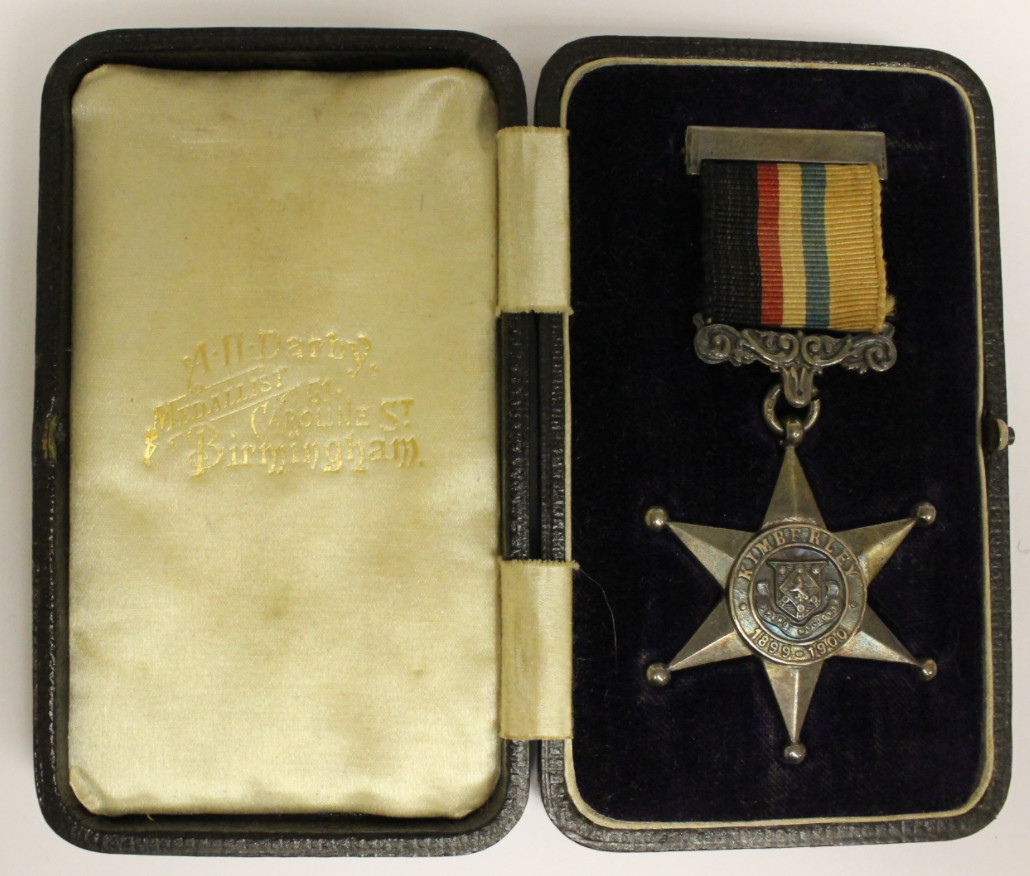
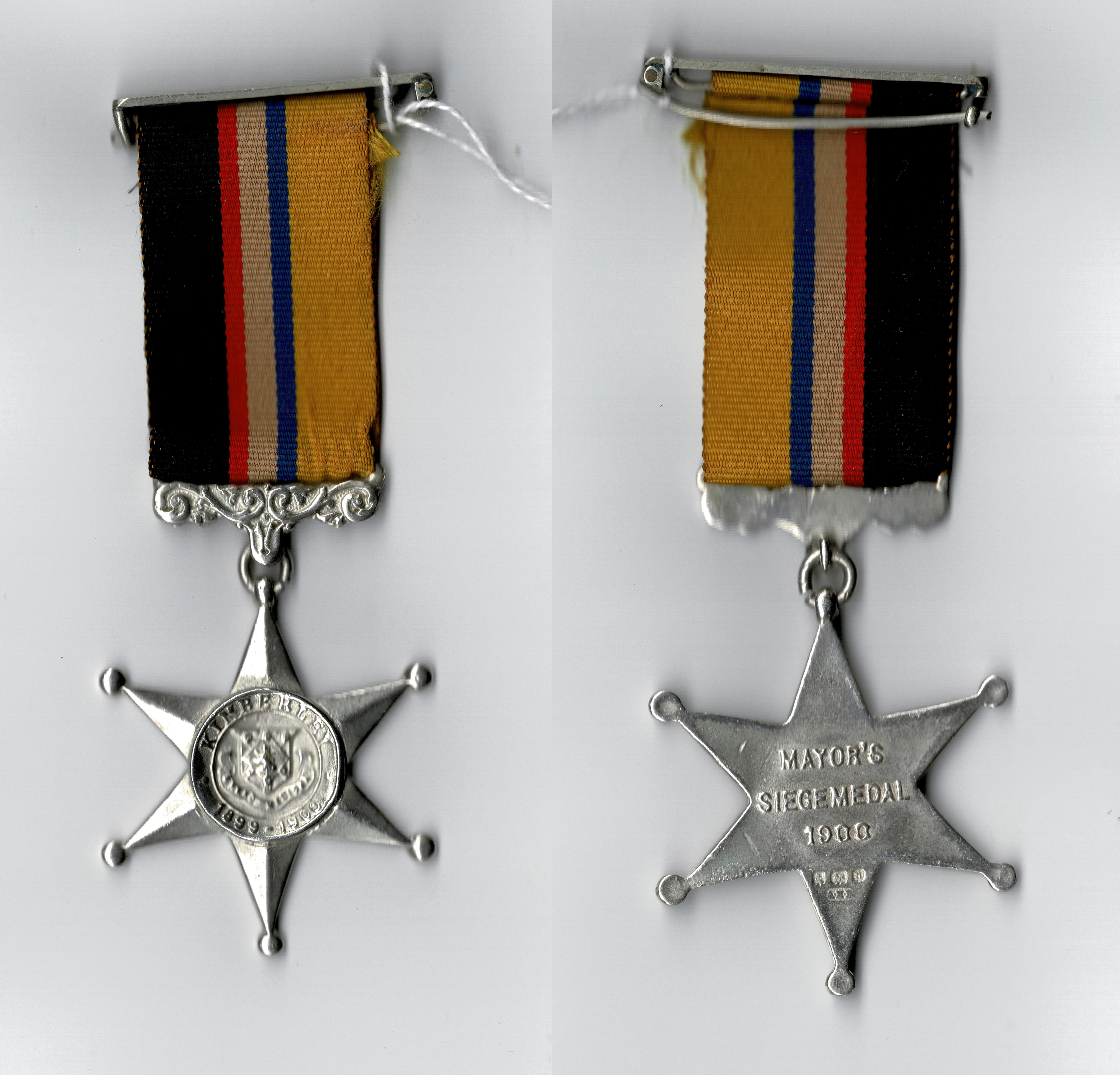
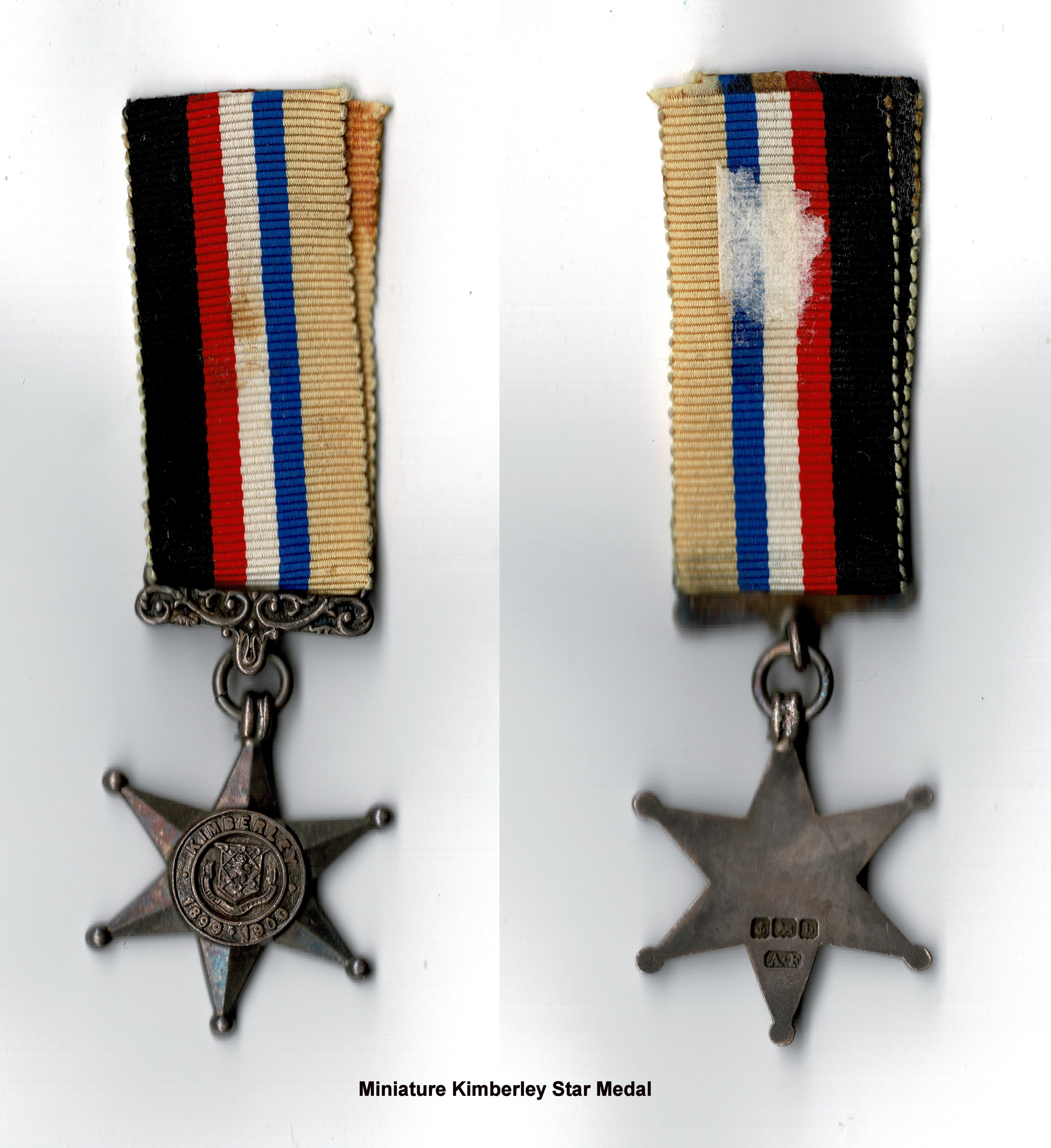
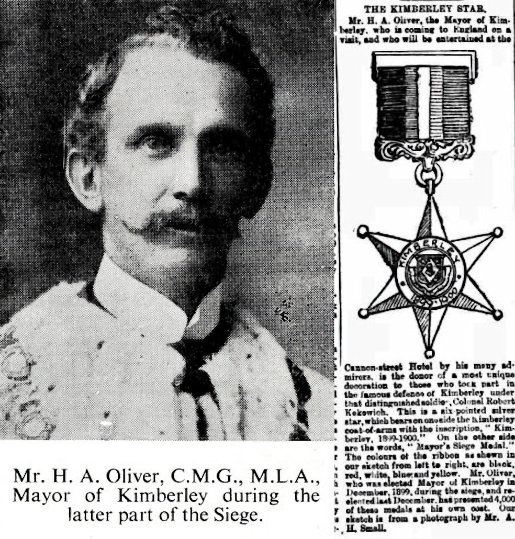
|
ConflictThe Second Boer War 1899-1902.HistoryThe Kimberley Star was an un-official British Empire campaign medal commissioned by the Mayor of Kimberley, Mr H.A. Oliver and presented by the Town Council of Kimberley. It was ‘instituted’ in 1900 and awarded to the defenders of Kimberley that endured the 124 day siege that commenced on the 15 October 1899. The award ceremony took place in the Public Gardens on April 15, 1901. The first recipient of the medal was Cecil John Rhodes, thereafter came the hospital nurses. The Mayor presented some 2,000 medals, while more than 2,000 other men were absent from the function and their medals were held for later presentation.It is not an official award and consequently, could not be worn on the uniform with other official campaign medals that were awarded to the recipient. The announcement of the Kimberley Medal (as it was called at that time) was published in the Illustrated London News 15 June 1901. Approximately 5,000 stars were awarded. There is no roll detailing the names of the recipients. Though I do believe at one time someone was keeping a roll and it disappeared in the mists of time and war. Two Kimberley Stars were struck in gold. These were given to Mayor H.A. Oliver and Mr. R. Archibald of DeBeers Co. These differ slightly as they were produced by a jeweler in Kimberley. NOTE: There were also miniatures produced of the silver and gold medals. DescriptionThe medal is of a six pointed star design (with small spheres at each tip), 41mm wide and 43mm in height and was struck in silver (although two were struck in gold), The obverse of the medal has a raised circular centre which bears the inscription; 'KIMBERLEY 1899 - 1900', around a depiction of the Kimberley town shield and motto; ‘SPERO MELIORA’. The reverse is flat and has the inscription; 'MAYOR'S SIEGE MEDAL 1900' and a silver hallmark - which can vary in style.The standard silver star was struck in Birmingham by Darby and Sons and is known with the "a", "b", "c" and "d" mintmarks. It was issued in white cardboard boxes with the makers name printed on the lid - at least 2 different boxes are known, Presentation stars, (identical to the standard issue) were issued in plush hinged black boxes with gold lettering on the lid (also by Darby and Sons). It is known that such boxes were issued to Sir David Harris, Mayor Henderson who was Mayor before Oliver and Sir Thomas Smartt. Mayor Oliver's gold Star was also presented in a similar case, but was produced by W.A. Rayner. The second gold star engraved to Mr Archibald was seemingly not made by Rayner but by a jeweler in Kimberley (it has no mintmark and the standard of workmanship is inferior). Miniature gold Kimberley Stars sometimes surface. Some say that that these were given to the members of the working crew who make the gun Long Cecil in the De Beers workshops [ but I have my doubts about this, I beleive the minature gold stars were only for Oliver and Archibald]. Presumanbly they did not attest for service as were they hard at work! - and accordingly did not get the standard silver star [I believe they did get the stardard silver star]. Archibald was the Manager in charge of the De Beers workshop and for his work there was given the gold version of the star. The other gold stars out there I believe were made by the jeweler for sale as momentos of the siege to those who did not qualify for the actual Kimberley Star. The standard star exists in several die varieties - for both obverse and reverse. Some are very "concave" and some very "convex" in shape particularly on the obverse while most are in between. Some believe that one of the reasons for the general issue of the Star rather than perhaps the earlier supressed circular medal is the reduced amount, and therefore the cost of silver necessary for it's manufacture which was funded by Mayor Oliver. The ribbon suspender is attached to the star by a small metal ring which is itself attached to an ornate silver clasp that was sown onto the ribbon. The medal was issued un-named. Ribbon
The ribbon is 25mm wide with a black left stripe, yellow right stripe and three narrower equal stripes of red, white and blue in the centre. Bars/ClaspsNone were authorised for this medal.Gold Miniature Kimberley StarKimberley Star, gold, 27mm, 18 carat, hallmarks for Birmingham 1901, in fitted black leather case of issue, good very fine and rare.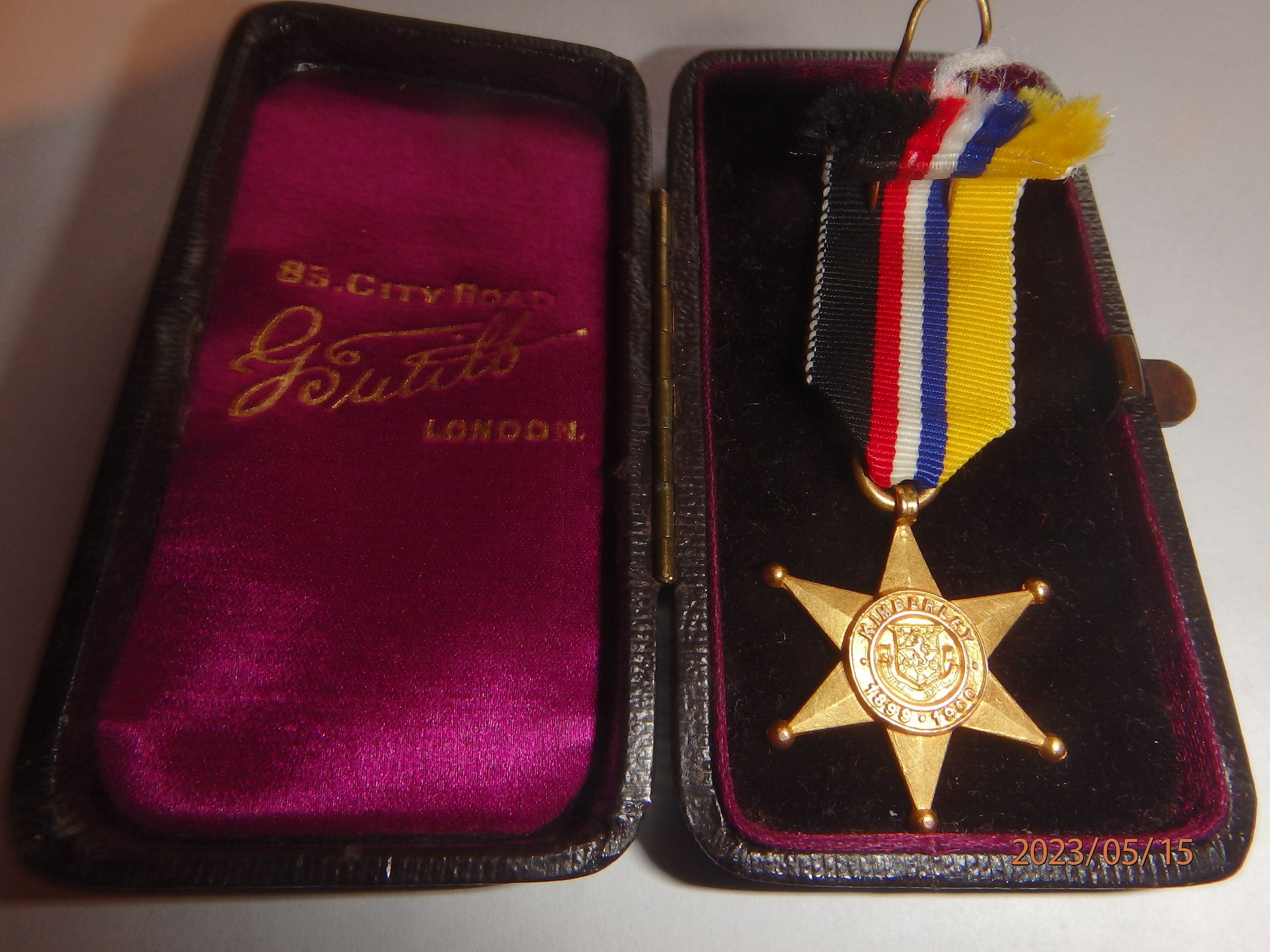
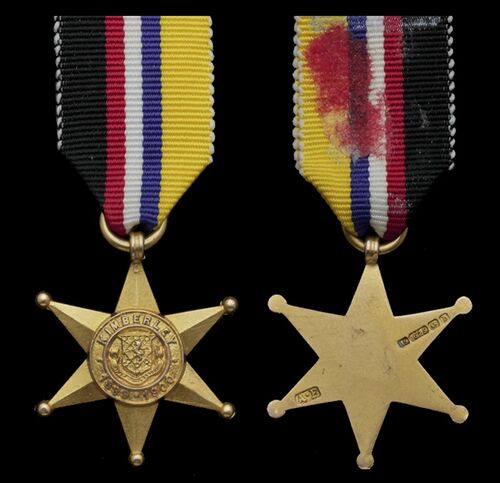
References: 1) Kimberley Under Siege, by A.J. Beet and C.B. Harris, 2nd Ed. 1950. 2) Boer War Tribute Medals, by M.G. Hibbard, Limited Ed. May 1982 - a great reference!!! 2) Forums - Gentleman's Military Interest Club 3) AngloBoerWar.com 4) OnlineMedals, Kimberley Star 5) South African Commemorative Medals 6) Lloyds Weekly Newspaper - Sunday 16 June 1901, p.5 |
|
|